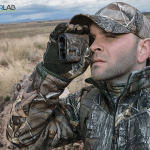

Rangefinders in golf serve a critical function: they provide accurate distance measurements to various points on the course. This information is vital, as golf is a game of precision and strategy. The difference of a few yards can dramatically alter the choice of club, the approach to the swing, and, ultimately, the shot’s outcome. Rangefinders remove the guesswork, offering golfers of all skill levels a clearer understanding of the course layout and the distances they need to cover.
The impact of using a rangefinder in golf extends beyond mere measurement. They aid in course management by helping players understand the layout, including hazards and the shape of the greens. This knowledge enables more strategic play, allowing golfers to make smarter decisions, whether avoiding a bunker or aiming for a favorable spot on the green. Additionally, rangefinders speed up play by reducing the time spent estimating distances, thus contributing to a more fluid and enjoyable round.
For the modern golfer, a rangefinder is more than an accessory; it’s a tool for improvement, a means of gaining confidence, and an aid in navigating the complexities of various golf courses. As we explore further, we’ll look at the different types of rangefinders, their benefits, how to choose the right one, and how to use them effectively to enhance your golf experience. Whether you’re a seasoned pro or a casual weekend player, understanding and utilizing a rangefinder can be a game-changer in your golf journey.
Table of contents
Understanding Rangefinders in Golf
To fully appreciate the role of rangefinders in enhancing your golf game, it’s crucial to understand what they are, how they operate, and the different types available in the market.
What are Rangefinders and How Do They Work?
A golf rangefinder accurately measures the distance between you and a specific target, usually in yards or meters. It works on two primary technologies: laser and GPS.
- Laser Rangefinders: These devices emit a laser beam toward the target (like the flag, a bunker, or a tree). When the laser hits the target, it bounces back to the rangefinder. The device then calculates the distance based on the time the laser returns. Laser rangefinders are praised for their precision and ability to measure the exact distance to the flag.
- GPS Rangefinders: GPS rangefinders use satellite data to provide distance information. They come preloaded with maps and data on golf courses. On a course, the GPS rangefinder shows the distance to the green’s front, middle, and back and to various hazards and doglegs.
Different Types of Golf Rangefinders
- Standard Laser Rangefinders Offer the most straightforward functionality—point and click to measure the distance to your target.
- Slope-Equipped Laser Rangefinders: These are advanced versions of standard laser rangefinders. They consider the elevation change between you and the target, providing a more accurate “play as” distance.
- GPS Watches and Handhelds: These rangefinders are wearable or portable devices that offer convenience and a continuous display of distance information without aiming at a target.
- Hybrid Rangefinders: Combining laser and GPS technology, hybrid rangefinders offer the best of both worlds—precise laser measurements and the holistic view of the course provided by GPS.
Each type of rangefinder has its own set of advantages. Laser rangefinders offer precision and simplicity, while GPS models provide comprehensive course information. The choice depends on your playing style, preferences, and how much detail you want about the course. In the following sections, we’ll delve into the benefits of using a rangefinder in golf and how to choose the right one for your game.
Benefits of Using a Rangefinder in Golf
Incorporating a rangefinder into your golf game brings many benefits, from improved accuracy to enhanced course management. Understanding these advantages can significantly change how you approach the game.
- Accuracy and Distance Measurement: The most immediate benefit of using a rangefinder is precisely measuring distances. Whether the distance to the pin, a hazard, or a specific point on the fairway, a rangefinder eliminates guesswork and provides exact numbers. This accuracy is crucial in selecting the right club and determining the strength of the swing.
- Enhanced Course Management: Rangefinders equip you with detailed knowledge of the course layout. This information includes the distance to hazards, bunkers, water bodies, and even the shape of the greens. With this data, you can strategize your shots more effectively, avoiding potential pitfalls and targeting areas that offer the best chance for a good next shot.
- Speeding Up Play: Rangefinders significantly speed up the game. Instead of walking off distances or spending time estimating the range to the target, a glance through a rangefinder provides the needed information instantly. This efficiency keeps the game moving steadily, reducing delays and making the round enjoyable for everyone involved.
- Improving Club Selection: One of the critical decisions in golf is choosing the right club for a particular shot. Rangefinders remove much of the ambiguity from this decision. By knowing the exact distance to the target, you can make a more informed choice about which club to use, leading to more consistent and accurate shots.
Integrating a rangefinder into your golfing repertoire can fundamentally change how you play. It provides a blend of accuracy, strategic depth, efficiency, and confidence that can significantly improve your game. As we move forward, we’ll explore what to look for when choosing the right rangefinder and how to utilize it effectively on the course.
Choosing the Right Rangefinder
Selecting the appropriate rangefinder for golf is a crucial decision that can impact your game. Understanding the key features to consider and the differences between laser and GPS rangefinders will help you make an informed choice.
Features to Look for in a Golf Rangefinder
- Accuracy: The primary function of a rangefinder is to measure distances accurately. Look for a model renowned for precision, typically within a yard or less.
- Range: Consider the maximum distance the rangefinder can measure. While you might not need extreme ranges, having a comfortable range buffer ensures versatility in different courses.
- Magnification: Higher magnification lets you see distant targets more clearly. Typically, rangefinders offer magnification from 4x to 7x. Choose one that gives you a clear view without making it difficult to hold steady.
- Size and Weight: A compact and lightweight rangefinder is easier to handle and carry around the course. Ergonomics play a vital role in your comfort during the game.
- Display and Readability: Look for a rangefinder with a clear, easy-to-read display. Features like brightness adjustment and high-contrast displays can be beneficial, especially under varying lighting conditions.
- Battery Life: A long battery life is essential for convenience. Also, consider how easy it is to replace or recharge the battery.
- Additional Features: Some rangefinders include slope calculations, vibration or sound confirmation when locking onto the target, and weather resistance.
Laser vs. GPS Rangefinders: Pros and Cons
- Laser Rangefinders
- Pros:
- Highly accurate distance measurements to specific points.
- No need for downloaded maps or GPS signals.
- Versatility to use on any golf course worldwide.
- Cons:
- Requires a clear line of sight to the target.
- Can be challenging to use in foggy or rainy conditions.
- Slightly more time-consuming as you need to aim at each target.
- Pros:
- GPS Rangefinders
- Pros:
- Provides distances to the green’s front, middle, and back and hazards.
- Quick and easy to use without needing to aim.
- Offers a broader perspective of the course layout.
- Cons:
- Dependent on pre-loaded course maps and GPS signal.
- Generally less accurate than laser rangefinders.
- Requires periodic updates and may have subscription fees.
- Pros:
In conclusion, your choice between a laser and GPS rangefinder should be based on your playing style, preference for convenience versus precision, and the typical conditions you play in. In the next section, we’ll delve into SPARKLE’s unique insight into the world of golf rangefinders, providing a deeper understanding of how these devices can transform your game.
A Deeper Look into Rangefinders
Embarking on a journey through the lens of a rangefinder opens up a world where precision and strategy intertwine beautifully in golf. Here, I offer my perspective on rangefinders’ impact on the sport and insights into emerging trends shaping their future.
Personal Opinion on the Impact of Rangefinders in Golf
In my view, rangefinders are not just measurement tools; they are transformation instruments. They democratize the game by leveling the playing field, allowing amateur golfers to make informed decisions once exclusive to seasoned professionals. This empowerment leads to more confident strokes, better course management, and deeper game enjoyment. What was once an intimidating distance or a vague hazard becomes a challenge approached with strategy and knowledge.
Emerging Trends and Future of Rangefinders in the Sport
- Integration of Augmented Reality (AR): The future of rangefinders in golf may well be intertwined with AR technology. Imagine a rangefinder that doesn’t just give distances but overlays a digital interface onto the real world, offering a comprehensive visual representation of the course, complete with distances, wind direction, and even recommendations for club selection.
- Enhanced Connectivity and Data Analysis: The next generation of rangefinders could offer more than distance measurements. By connecting to other devices and using cloud-based analytics, they could track your performance over time, suggest areas for improvement, and even offer personalized coaching tips based on your playing patterns.
- Eco-friendly Innovations: As sustainability becomes more crucial, we may see rangefinders equipped with solar charging capabilities or made from environmentally friendly materials, aligning the sport with eco-conscious values.
- Increased Customization: Future rangefinders might offer more personalized experiences with customizable interfaces, adjustable settings for different types of courses, and user profiles that remember your preferences and playing history.
- Inclusion of Virtual Caddie Services: Integrating virtual caddie services in rangefinders could be a game-changer. This service would advise club selection and shot strategy based on the current hole’s layout, weather conditions, and your playing history.
In conclusion, the evolution of rangefinders is not just about technological advancement; it’s about enhancing the golfer’s experience and making the game more accessible, enjoyable, and competitive. The potential for growth and innovation in this field is vast, and it’s an exciting time to be a golfer embracing these advancements.
Using a Rangefinder Effectively on the Course
Integrating a rangefinder into your golf game is more than just about having the right tool; it’s about using it effectively to enhance your performance. Here are some tips and techniques for maximizing the use of rangefinders, along with common mistakes to avoid.
Tips and Techniques for Maximizing the Use of Rangefinders
- Familiarize yourself with your rangefinder: Before taking the course, spend time understanding how your rangefinder works. Practice using it in different scenarios to become comfortable with its functions and features.
- Pre-Course Mapping: Review the course map beforehand if you’re using a GPS rangefinder. This gives you an idea of critical distances and can help you plan your strategy for each hole.
- Target More Than the Flag: While the flag is a common target, it also measures distances to hazards, trees, bunkers, and other strategic points. This information can help make smarter choices on the course.
- Use it for Practice Rounds: Use your rangefinder to learn how far you hit with each club during practice rounds. This knowledge can be invaluable in improving club selection during actual games.
- Check Battery Before Rounds: Ensure your rangefinder’s battery is fully charged or has a fresh battery before starting your round to avoid mid-game disruptions.
Common Mistakes to Avoid
- Over-Reliance on the Rangefinder: While rangefinders are helpful, they shouldn’t replace your instinct and judgment. Use the information they provide as a guide, not the sole basis for your decisions.
- Ignoring Environmental Factors: Rangefinders measure distance but disregard wind, elevation changes, or weather conditions. It’s essential to consider these factors in addition to the distance measurements.
- Not Verifying the Target: Lock onto the correct target with laser rangefinders. Sometimes, the laser may hit trees or other objects behind the intended target.
- Using It in Prohibited Competitions: Always check the tournament rules regarding rangefinder usage. Some competitions may not allow devices that measure slope or offer other advanced features.
- Neglecting Course Knowledge: Don’t let the rangefinder replace your understanding and experience of the course. It should complement, not substitute, your course knowledge.
By following these tips and being aware of common pitfalls, you can effectively incorporate a rangefinder into your golf strategy, leading to a more informed and potentially lower-scoring game. Remember, the best use of a rangefinder comes from a blend of technology and personal golfing savvy.
Frequently Asked Questions (FAQs)
How accurate are golf rangefinders?
Most modern golf rangefinders are highly accurate, typically within a yard. Laser rangefinders offer the highest precision, while GPS models provide more general distance information.
Is it legal to use a rangefinder in golf tournaments?
The use of rangefinders in tournaments is generally allowed under specific rules. Most importantly, the device should not have features like slope calculation during tournament play unless the local rule permits it.
What is the difference between golf and hunting rangefinder?
Golf rangefinders are precisely calibrated for the golf course, providing distances to the flag, hazards, and other course features. On the other hand, hunting rangefinders are designed for longer ranges and may include different features suitable for hunting.
Do I need a rangefinder with a slope for golf?
A slope feature is helpful as it calculates the adjusted distance based on elevation changes. However, it’s not essential for everyone, especially if you play on relatively flat courses or in tournaments where slope features are not permitted.
Can golf rangefinders help improve my handicap?
While a rangefinder itself won’t directly lower your handicap, it can aid in making more accurate shots and better course management, which can contribute to improved play over time.
How do I choose between a laser rangefinder and a GPS rangefinder?
The choice depends on your preference and playing style. A laser rangefinder is ideal if you want precise distances to specific targets. A GPS rangefinder might be better if you prefer an overview of the hole with distances to various points.
How long do golf rangefinders typically last?
The lifespan of a golf rangefinder depends on the quality of the device and how well it’s maintained. High-quality rangefinders can last several years with proper care.
Can weather conditions affect the performance of rangefinders?
Yes, extreme weather conditions like heavy rain or fog can affect the performance, especially of laser rangefinders, as they rely on a clear line of sight to the target.
Are there any maintenance tips for rangefinders?
Keep the lens clean and avoid exposing the rangefinder to extreme temperatures or moisture. Also, ensure the battery is charged or replaced as needed.
How important is the size and weight of a golf rangefinder?
The size and weight are essential in terms of portability and comfort. A compact, lightweight rangefinder is more accessible to carry around the course and use during play.
Incorporating a rangefinder into your golf arsenal can be a game-changer. By understanding their features and capabilities and how to choose and use them effectively, you’re on your way to a more informed and improved golfing experience.
Conclusion: Enhancing Your Golf Experience with Rangefinders
As we conclude our exploration of golf rangefinders, it’s clear that these devices are more than just a modern convenience; they are a transformative tool that can significantly enhance the golfing experience. Let’s recap their crucial roles and offer final thoughts on integrating rangefinders into your game.
Recap of the Importance and Benefits of Rangefinders in Golf
Rangefinders have redefined the way golfers interact with the course. They bring a host of benefits:
- Precision and Accuracy: They eliminate the guesswork in distance measurement, allowing for more accurate and confident shots.
- Improved Course Management: Rangefinders, with their detailed knowledge of the course layout, help strategize each shot more effectively.
- Enhanced Game Speed: They contribute to a faster pace of play, reducing wait times and improving the game’s overall flow.
- Better Club Selection: With exact distances, golfers can make more informed club selection decisions tailored to each shot.
These benefits underscore the rangefinder’s role as a tool for measurement and as a companion that elevates the entire golfing experience.
Final Thoughts and Encouragement for Integrating Rangefinders into Your Game
Integrating a rangefinder into your golfing practice represents an investment in your skill development and enjoyment of the game. Whether you’re a seasoned player or a casual enthusiast, a rangefinder can provide insights and advantages previously unattainable.
As technology continues to evolve, so does the potential for improvement within golf. Rangefinders are at the forefront of this evolution, combining traditional aspects of the game with modern innovation. The key is to select a rangefinder that aligns with your needs, whether for casual weekend rounds or competitive play.
Encourage yourself to embrace this technology and the numerous benefits it offers. A rangefinder, used effectively, is not just about lowering scores; it’s about enriching your understanding and appreciation of the game. Embrace the precision, strategy, and enjoyment a rangefinder can bring to your golf experience. With it, every round becomes an opportunity to learn, improve, and, most importantly, enjoy golf.








